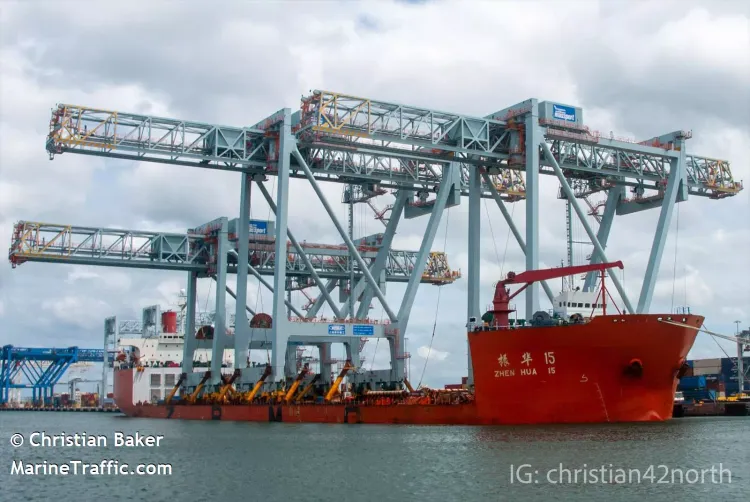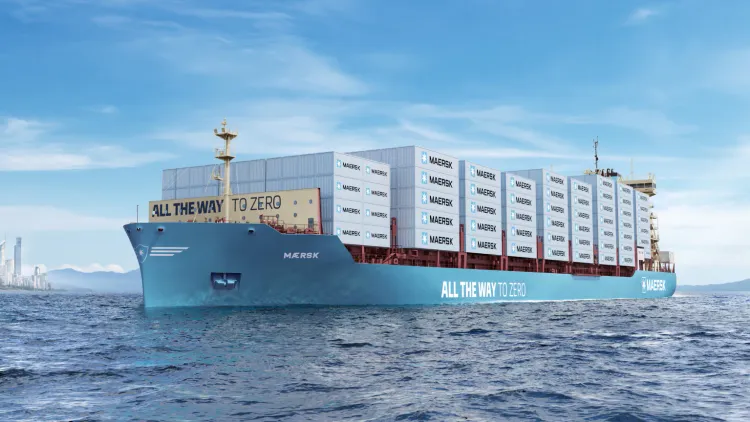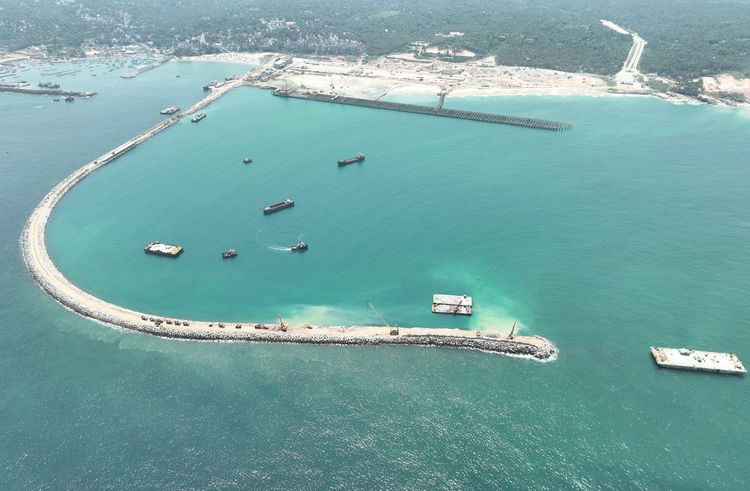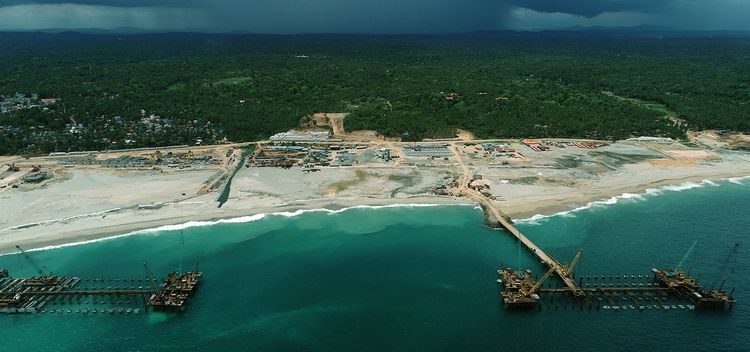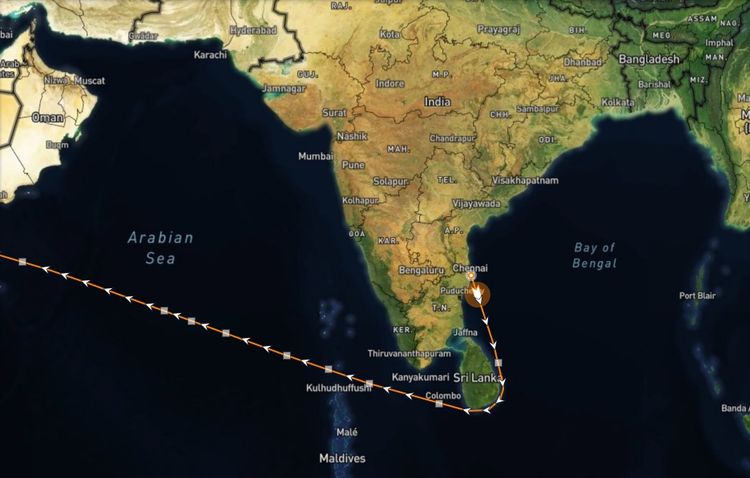It is easy for us to perceive the five individuals imploding at the depths of the Atlantic as mere thrill-seekers on a tour. However, do we ever pause to contemplate the profound and daring expeditions undertaken by courageous individuals that have contributed to the remarkable world we enjoy today? Countless extraordinary lives have been sacrificed in the pursuit of scientific research. The untold narratives of the ocean's mysteries continue to elude our grasp, with each seabed holding countless stories waiting to be unravelled.
The recent arrival of MSC Hamburg, a container ship with a capacity of 16,652 containers, at Jawahar Lal Nehru Port in Mumbai has elicited a sense of celebration in the Indian shipping industry. This marks a significant moment in India's maritime history, as such a large vessel docks on Indian shores, offering a sense of relief and pride. A LinkedIn post by the Ministry of Ports, Shipping, and Waterways caught my attention, featuring the statement, "Don't worry, we have a place even to berth Godzilla!" However, the precise intention behind the ministry's claim remains unclear. If their statement implies India's ability to accommodate the largest ships globally, it becomes essential for the Ministry of Shipping to specify which ports are equipped for such vessels. Notably, MSC's largest ships possess capacities exceeding 24,000 containers, such as MSC Irena and MSC Loreto. It would indeed be a source of pride if the ministry could facilitate the berthing of one of these large vessels at JNPT. Nevertheless, it is disconcerting that, even after seventy years since the inception of global container shipping in 1956, Indian ports still encounter challenges in accommodating large ships. This situation necessitates a thorough investigation into the underlying reasons. The Indian Ministry of Shipping has faced criticism for attempting to monopolise ships and cargo at a limited number of ports, thereby hindering India's integration into the global shipping space. Conversely, historical records highlight India's significant contribution to the economic growth of various nations. In the 17th century, when the Portuguese discovered the sea route to the Indies, it propelled Dutch commerce and shipping, leading to the expansion of Rotterdam's harbours and facilities along the Meuse River. The Dutch economy thrived as it recognized the potential for sea voyages, ships, and trade. The Portuguese played a pivotal role in introducing the Dutch to an adventurous route to the Indies, and an Indian guided the Portuguese to triumphs in maritime exploration.
The sailing expedition embarked upon after King Manuel's ascension to the throne in Portugal holds a captivating and somewhat eerie narrative. The long-standing aspiration to discover the Indies was reignited during this time. Centuries of maritime history converged on a momentous day in July (8th July 1497) when a huge gathering assembled on the shores of Lisbon. Not only the King and his retinue but also the families of the 170 sailors comprising Vasco da Gama's crew witnessed this proud occasion for the Portuguese nation. The goal of this sea voyage was to establish international supremacy by reaching the enigmatic realms of the Indies. It was an expedition into uncharted waters, where the destination remained uncertain, and communication relied solely on intuition rather than navigational aids. The inherent uncertainty of the journey led to teary eyes and trembling lips among those left behind, apprehensive about the return of their loved ones. In a symbolic gesture, the King presented the Portuguese flag and bestowed his blessings upon it, while religious leaders waved censers and offered prayers, invoking divine guidance and protection.
One of the primary goals of Vasco da Gama's expedition was to break the monopoly on trade in India and other Eastern countries, which had long been controlled by Muslim traders. The voyage consisted of four ships that navigated the western winds of Africa. It was during this journey that the Gama and his crew truly experienced the might of the Atlantic Ocean when they reached the southern tip of Africa after passing the Canary and St. Helena Islands. Continuing along the eastern coast of Africa, they eagerly anticipated the grandeur of the Indian Ocean. As they reached the shores of Malindi in present-day Kenya, following their passage through Mozambique, a new year had begun. Vasco da Gama was plagued by apprehension as he contemplated the next leg of the voyage to the Indies, aware of the numerous diseases and fatalities they had already encountered.
On April 14, 1498, as the Malayalis welcomed their new year, a Gujarati sailor named Kanchi Malam came to the assistance of Vasco da Gama. Kanchi emerged as the true hero of the subsequent journey to the Indies. Notably, Kanchi and his crew completed the journey to Kappad (present day Kerala, India) in an impressive 23 days. It is crucial to rectify this oversight and acknowledge Kanchi's significant contribution to the expedition. A fact that we might have never come across.
It is disheartening to observe that Kanchi's remarkable contribution has been conveniently omitted throughout history, while Vasco da Gama's name has been prominently remembered. Despite the significance of Kanchi's role, historical records, including those of Gama’s, fail to mention him by name. Instead, he is merely referred to as 'A Gujarati Pilot.'
To unravel the greatness and knowledge possessed by Kanji, we must dust off some faded pictures from Gama's return journey. The return voyage of Vasco da Gama, who failed to establish favourable relations with the Zamorin of Calicut, imparts valuable lessons that should not be disregarded. With Kanji's assistance, Gama sailed from Malindi in Africa to Calicut in a mere 23 days, while his return journey without Kanji took over four months. The Gama crew, lacking an understanding of monsoon winds, departed at the end of August, first reaching the shores of Goa. By the time they returned to Malindi marked by challenging weather conditions, it was already the year 1499. Our Prime Minister himself attests that Kanchi, who parted ways with the Gama crew in Kozhikode and headed to Gujarat, did not fade into historical oblivion. The narrative we have heard is that a Gujarati named Kanchi Malam guided Vasco da Gama, enabling his arrival in India. Had Kanchi not been with him, would Gama have reached Kozhikode? Could global history itself have taken a different course?
By the time the crew returned to Portugal, of the 170 members and 4 ships, 115 of them had lost their lives and only two ships returned with remaining crews. They descended into the depths of the Indian-Atlantic oceans followed by their last rites, an unacknowledged sacrifice that the world fails to recognize, as Vasco da Gama opened up a new world of wealth by establishing a route through the Indian Ocean. His voyage and explorations played a pivotal role in reshaping the world for Europeans.
Following Vasco da Gama's return, the Dutch entered India in 1596 and successfully established a century of trade dominance, surpassing the Portuguese. The availability of Indian spices, ivory, and other valuables played a significant role in accelerating Europe's economic growth prior to the industrial revolution. Meanwhile, the Dutch were making remarkable advancements in maritime navigation. Starting as a humble fishing village in the 1300s, the riverbank of the Roto gradually transformed into a bustling seaport by the 15th century. This marked the beginning of decades and centuries of global naval supremacy for the Dutch.
The extent of their growth can be quantified through a simple calculation. Presently, the per capita income of the average Dutch citizen exceeds INR 50 lakhs (US$ 61,098), while the Indian population faces economic challenges of a substantial magnitude. It is openly acknowledged that the Dutch economic growth was made possible by the contributions of the Indian subcontinent. The maritime history of the Netherlands, the Dutch East India Company, and the Dutch West India Company serve as essential sources to understand the various stages of development in the Netherlands. While the Dutch East India Company and the Dutch West India Company are relatively familiar, delving into the comprehensive study of maritime history becomes imperative.
While Mumbai celebrates its current achievements of MSC Hamburg, the Dutch experienced immense jubilation decades ago. Presently, they are constructing the final component of their triumphant Portlantis, a symbol of their victory. Understanding the magnitude of the Rotterdam port can be challenging. The port area stretches 40 kilometres in length and 10 kilometres in width, which is difficult to comprehend in an Indian context. Drawing a comparison may offer some insight. The land area of JNPT, India's largest port, spans approximately 8,500 acres, whereas the Rotterdam Port occupies a vast area of 31,410 acres. Annually, the port handles around 30,000 ships arriving from the sea and facilitates the movement of 105,000 ships inland.
To summarise their accomplishments, the port has generated 385,000 direct and indirect employment opportunities throughout the country. Furthermore, the port and its associated sectors contribute 7% to the nation's GDP. The Dutch focus on expanding their maritime influence extends beyond these achievements. The Princess Alexia Haven project, aimed at reclaiming about 100 acres of sea, is already underway. Through these ambitious plans, the Dutch implicitly convey their readiness to receive a wide array of ships that arrive and are expected to arrive from around the world, positioning themselves as a vital gateway for all of Europe.
An observation worth mentioning is that the Dutch refrain from boasting about their capacity to accommodate colossal "Godzilla" ships, suggesting that the proverbial vessel is seldom empty. Their focus lies in asserting that when the Port of Rotterdam thrives, Europe's economy prospers. This sentiment resonates across European nations, paying homage to the sacrifices made by individuals who tragically lost their lives at sea during voyages that played a vital role in advancing human development. The acknowledgment of these sacrifices underscores the significance of maritime expeditions and their profound impact on the progress of civilisation.
This article © 2023 by Motherport News is licensed under CC BY 4.0
